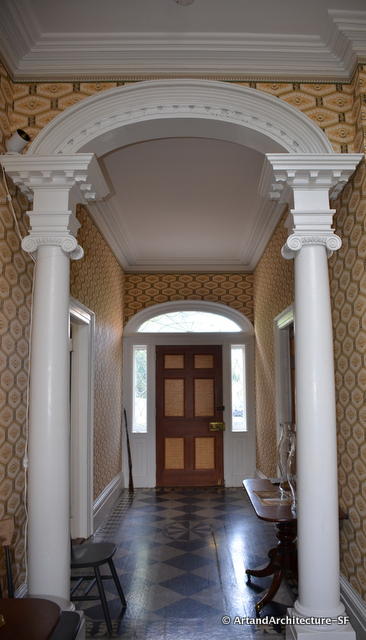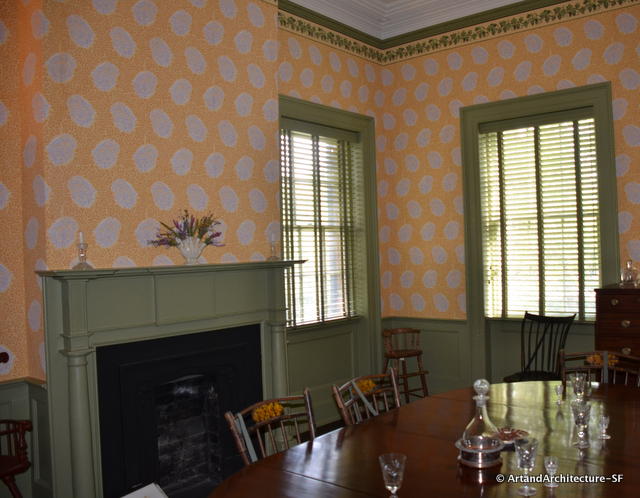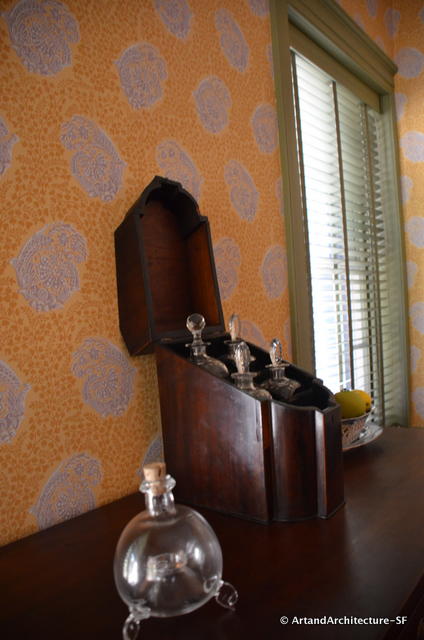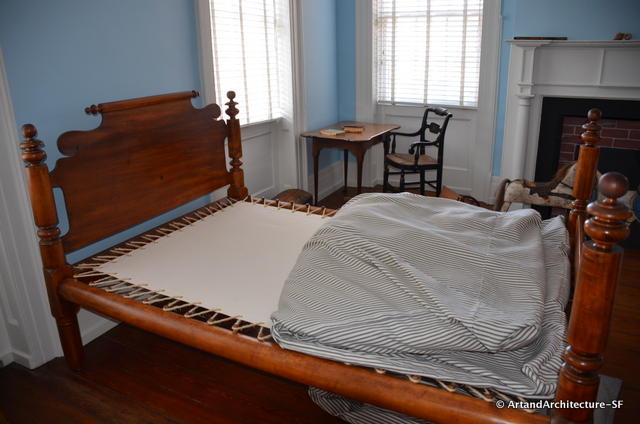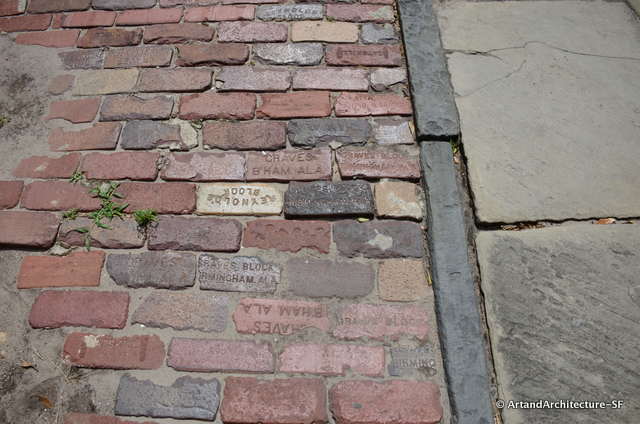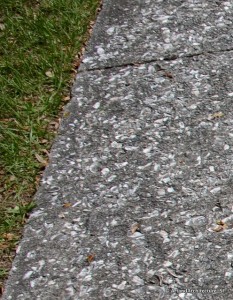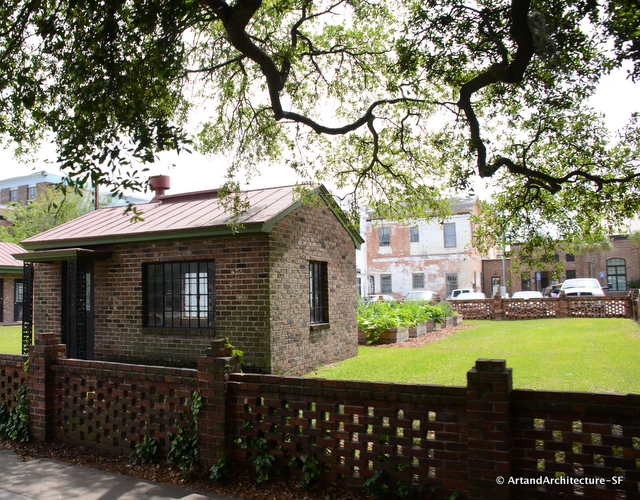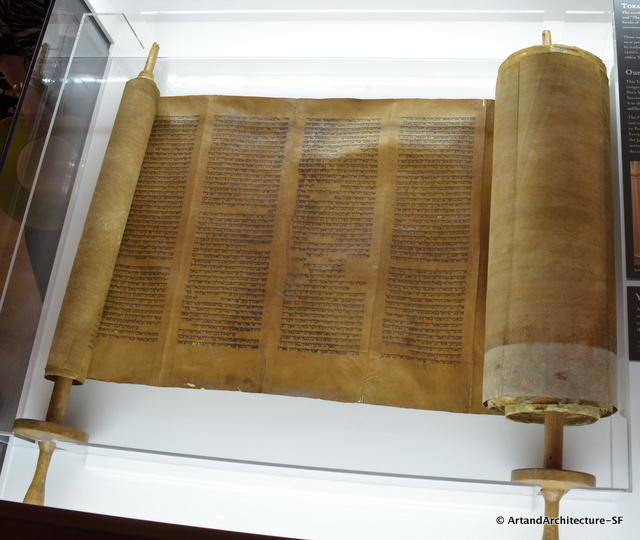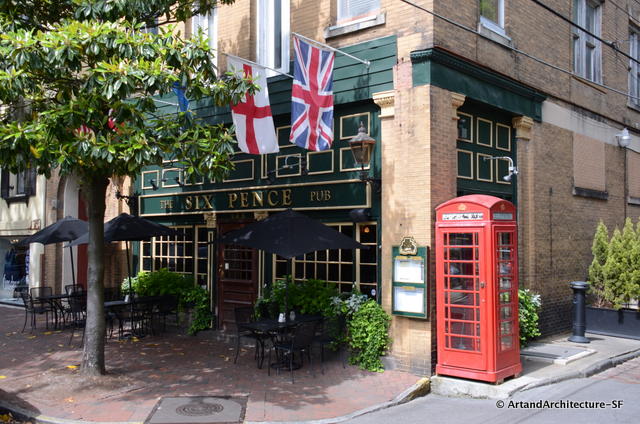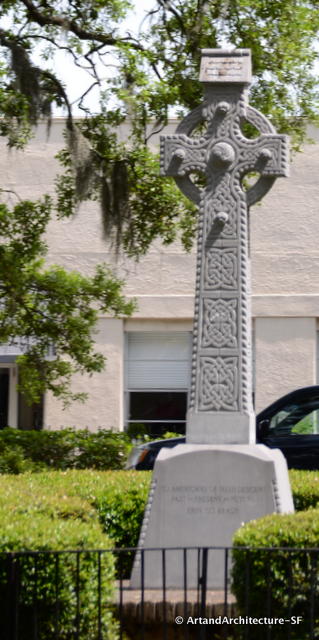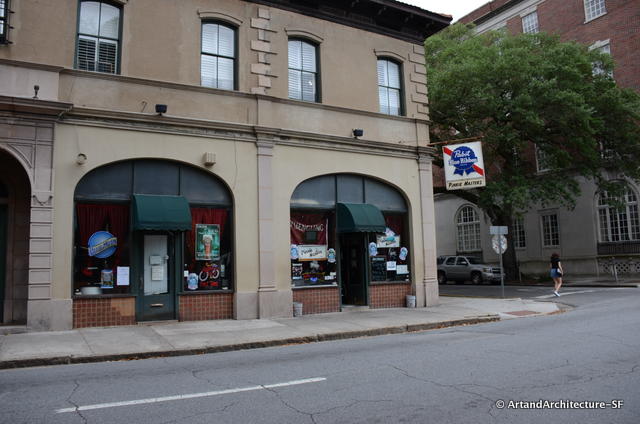There are so many wonderful architectural styles in Savannah, with details galore. I wanted to focus on a few items of interest that aren’t often talked about. The Archway in a private home delineated the private rooms from the public ones. The parlor and the gentleman’s office in this house are the two rooms that are between the front door in the background and this stunning arch.
Haint Blue has a lot of mysticism and rumor surrounding it. An oft repeated theory states that its roots are in the Geechee culture. The Geechee are African-Americans found mainly in the low country. Descendants of slaves, their belief system is a mixture of African witchcraft and a bit of Christianity.
The story goes that painting sections or even entire homes this shade of blue came from the Geechee belief in witches and “haints” or spirits. Apparently these ghosts could not cross water so the blue was believed to repel the spirits.
The color is made of a mixture of indigo dye, milk and lime (the burning and grinding of the oyster shells as seen in tabby). Lime is a natural insect repellent, but I believe this is just a good side benefit, I doubt they knew that at the time.
Another bug repellent was arsenic. Here it is in the dining room in the green paint.
Madeira started arriving in Savannah in the 1760s, it was even advertised in Georgia’s first newspaper. By the 19th century, Savannah was a major importer of Madeira. It was so popular with the wealthy, their cellar inventories are still talked about today.
So what happened to Madeira? Three things contributed to the demise of Savannah’s Madeira culture: the economic upheaval of the War Between the States and two blights of the vine that decimated much of Europe’s vineyards in the 1850s and 1870s.
By the time production and America’s economy recovered, the taste for Madeira had waned.
Another reason for the wine’s success in the South is its stalwart character. As a fortified wine, it survives heat, humidity and rough ocean crossings. Once opened, it seems to keep indefinitely.
Feather beds were terribly expensive in the past. The feathers from the occasional chicken or turkey dinner would be saved until there were enough to stuff a mattress.
Spanish Moss and Pine straw however, were prevalent and cheap. The pine straw mattress took a lot of work, the pine needles would clump together, so every morning someone, a slave in the case of the south, had to pull the lumps apart. The Spanish Moss appeared, to me at least, to be the most logical. It was a much more comfortable material, and in the south, almost as prevalent as pine needles at the time.
Since many ships arrived in Savannah somewhat lighter than they intended to leave, they needed ballast during the voyage. These bricks, which acted as ballast, eventually became a sidewalk.
Tabby, while most often found as a material in the walls of buildings, works just as well as sidewalk material. You can read all about Tabby in my article about Beaufort, South Carolina.
The Trustees Garden was the first experimental garden in America. The garden was modeled after the Chelsea Botanical Garden and was ten acres. Botanists were sent from England to scour the world for the project. They brought vine cuttings, fruit trees, flax, hemp, spices, cotton, indigo, olives and medicinal herbs. The trustees laid their greatest hopes on wine industry and in Mulberry trees which were essential to the culture of silk. Both of these crops failed due to the unsuitable soil and weather conditions. However, they did produce the peach trees Georgia is so famous for, as well as upland cotton.
Next to the Trustees Garden is the Pirates’ House. It was built in 1734 and is said to be the oldest house in the State of Georgia. It was originally the home of the gardener for the Trustees Garden.
Eventually the building became a Seaman’s Inn and obviously a drinking establishment. Rumors insist that there is a tunnel from the rum cellar to the docks for Shanghaing sailors. What is known is that Savannah is mentioned several times in Robert Louis Stevenson’s Treasure Island, and some say that a few passages of it were based on The Pirates House.
The first Savannah radio station opened in October 1929. Its call letters WTOC stood for Welcome to our City.
The congregation of Mickve Israel was founded by a group of 42 Jews who sailed from London aboard the William and Sarah, they arrived in Savannah on July 11, 1733, just months after the colony’s establishment. These founders brought with them a “Safertoro” or Torah made of deerskin, it was the first brought to the U.S. and also the oldest in the U.S. This Torah is still used on commemorative occasions today.
Savannah has the second largest St. Patrick’s Day celebration in the country. They begin in mid-February with an Irish festival, a Celtic cross ceremony on March 1 and many lesser parades and events leading up to its big St. Patrick’s Day Parade.
There is also a William Jasper Green ceremony. The event honors the Irishman who came to fight the British in the Revolutionary War and lost his life in the Siege of Savannah in 1779. It has become a ceremony that honors all who have served in the military.
On St. Patricks Day in 1978, Jimmy Carter stood on the bar at Pinkie Masters and gave a speech. Al Gore gave one in there on St. Patrick’s Day as well.
The Six Pence (shown above) is just one of many Irish Pubs in Savannah, it serves good food, but also starred in the movie Something to Talk About.
